Italy, Sicily and Sardinia. November 2019 to February 2020
Southern Italy A - West Coast, Vesuvius, Herculanium and Pompeii.
West Coast - Sabaudia
After 5 busy days in Rome we headed south-west to the small town of Sabaudia. From the Camper stop we were able to walk across the bridge over the lagoon and down to the sea.
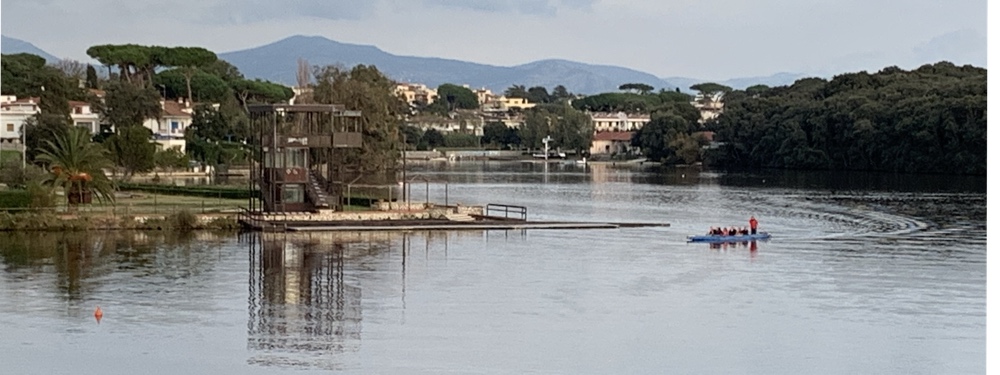
The lagoon was always busy with canoeists and rowers.
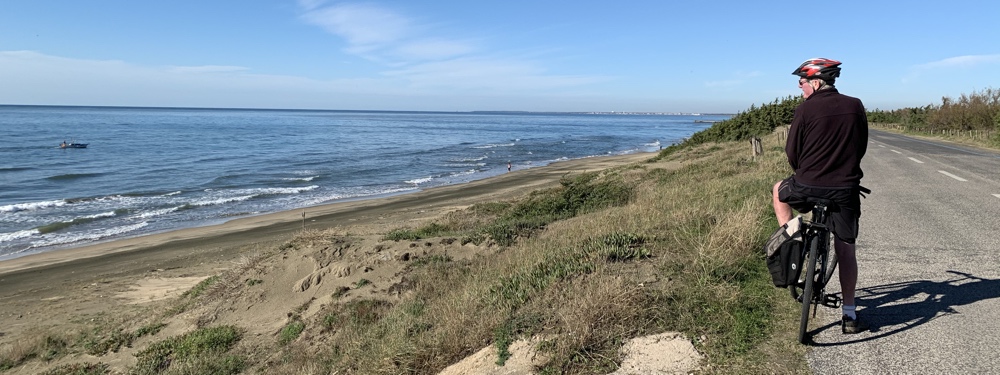
The following days was beautiful with blue skies and no wind so we cycled north along the quiet coast road between the sea and the lagoon.
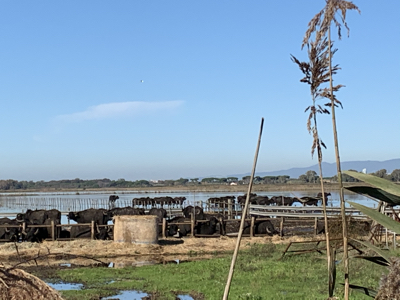
Water buffalo, used to produce buffalo mozzarella cheese.
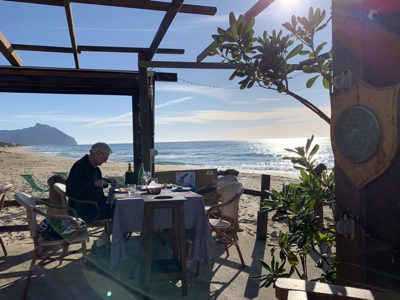
After our ride we found a restaurant that was open for a late lunch.
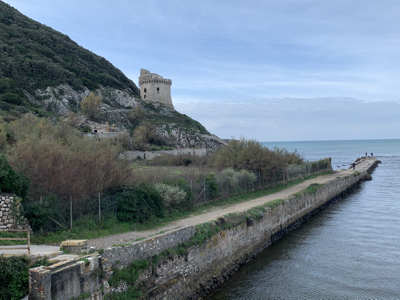
We had hoped to explore this tower but, sadly, it was fenced off.
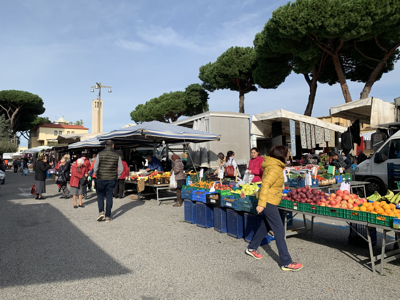
A huge market (100 + stalls) in this small town.
West Coast - Sant'Agostino
We stopped at a site across the road from the beach. There weren't any quiet roads for cycling so we went for some walks along the beach.
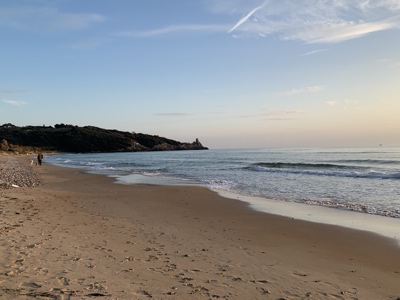
Lovely quiet beaches.
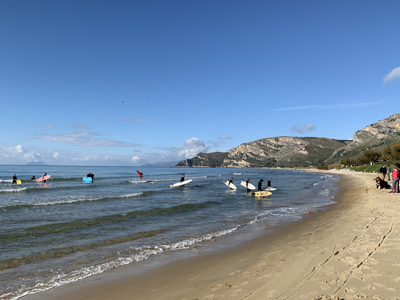
On one of our walks we saw a group of boarders coming ashore.
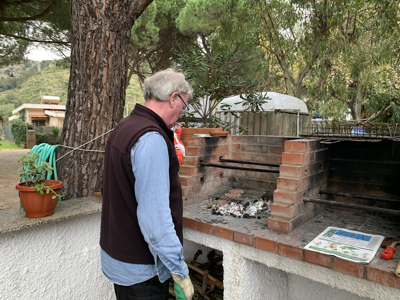
Our first braai
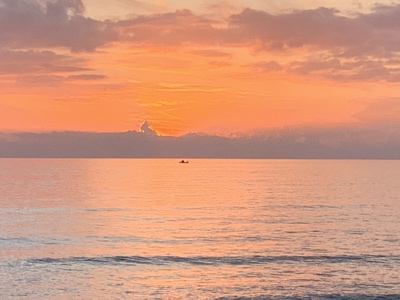
Sunset.
West Coast - Itri
Heading south we visited the old hill town of Itri, a few kms inland. Very glad that our camper isn't large as some of the roads to get to the 'car park' were very narrow. We had a walk around the old town which had lots of steps and steep passageways - the residents must be fit as hardly any of the streets are accessible by car.
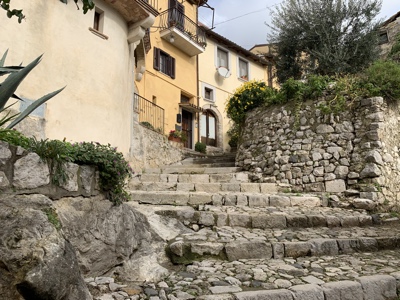
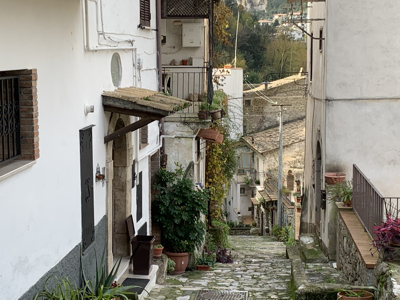
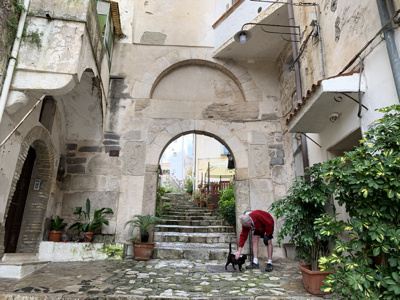
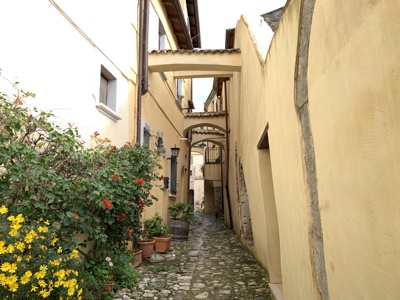
West Coast - Montdragone.
We stopped at a 'proper' campsite for a change. In December there was only 1 other person, Guiseppe, staying who kept his caravan there. He said that during the summer it is choc-a -block. More lovely empty beaches to walk along!
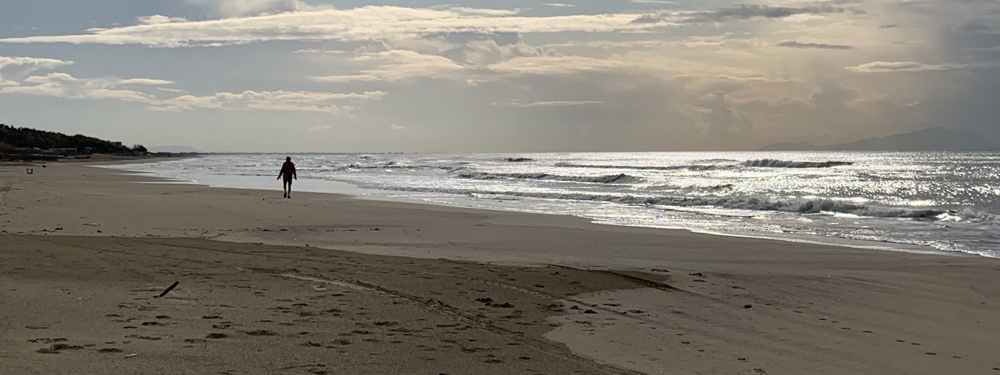
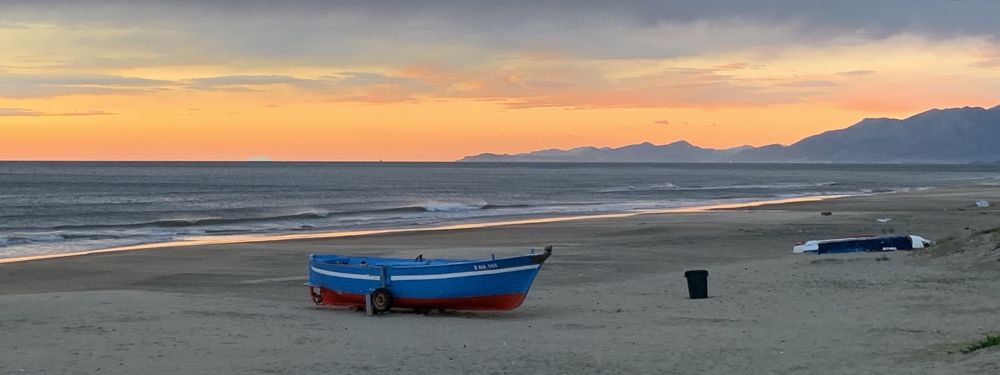
Giuseppe offered to take us to see a Roman harbour a bit further north. He had good English so was able to chat about the region and the history of the area.
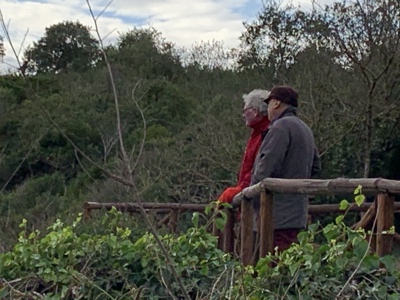
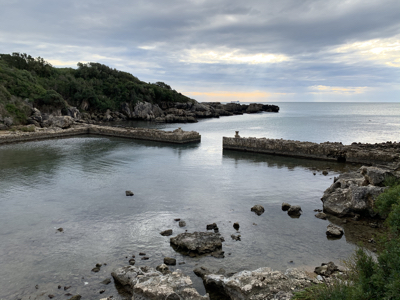
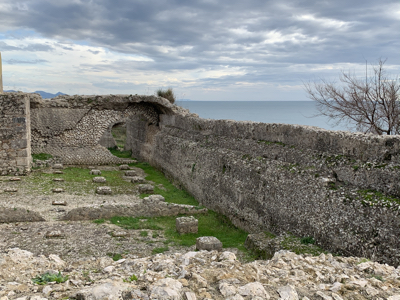
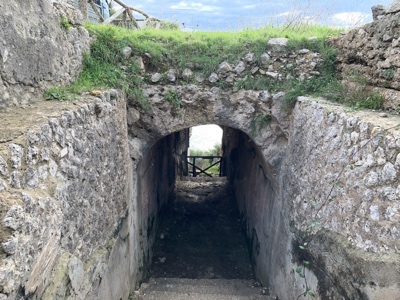
Mount Vesuvius.
When we arrived at the camper stop in Ercolano it was drizzling but when we got up the following morning the sky was blue and there was hardly a breath of wind - and we had our first sight of Mount Vesuvius. We decided that we must make the most of the weather and go to the top of the mountain today. We had stunning views from the top.
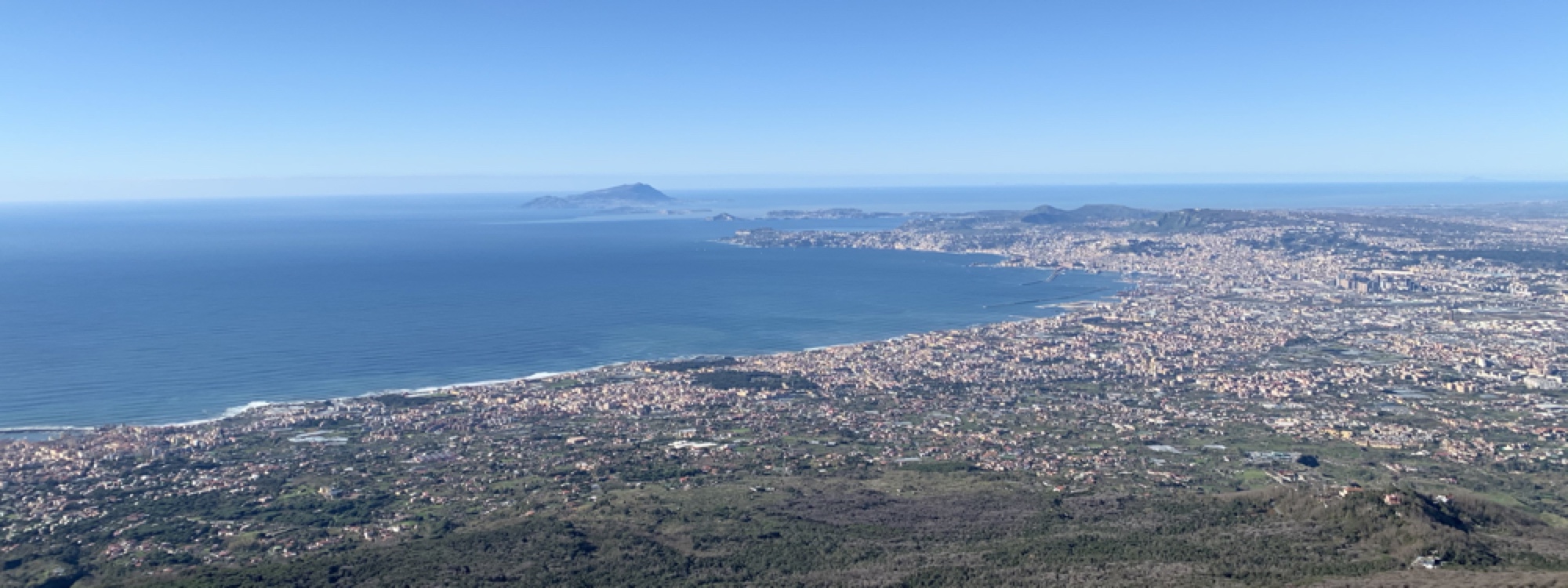
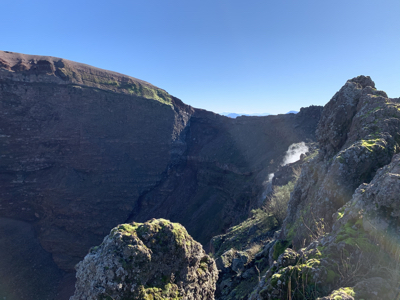
Some stean rising on the right from a small fissure in the crater.
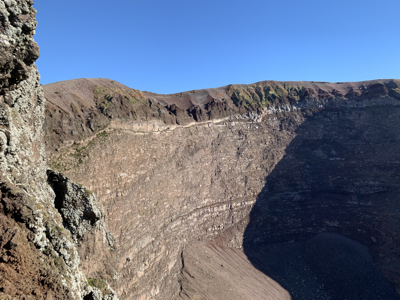
The crater is very deep - photos don't do it justice.
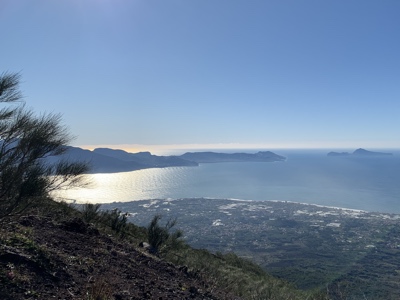
The view of the Sorrentine Peninsula to the south of Vesuvius.
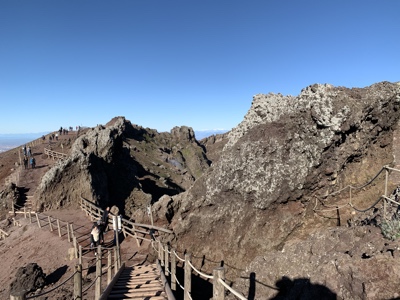
Part of the path along the rim of the crater - not too busy at this time of the year.
Herculaneum
Although we knew that a volcanic eruption of Mount Vesuvius (in 79 AD) had buried the Roman city of Pompeii under ash we hadn't realised that it had also destroyed the smaller seaside town of Herculaneum until we stayed in the area and did some research.
Herculaneum was destroyed after Pompeii when a second eruption took place. The cloud of toxic gases from the eruption wiped out the inhabitants, while the entire city was literally sealed under a flow of ash and volcanic rock 20 metres deep that solidified, preserving almost perfectly intact organic remains like fabric, food, vegetation and wooden structures as well as double storey buildings. Herculaneum is, in fact, better preserved than Pompeii and was discover by accident in the 18th century when a well was dug and artifacts were found. Only part of the town has been excavated as much of it still lies under the town of Ercolano.
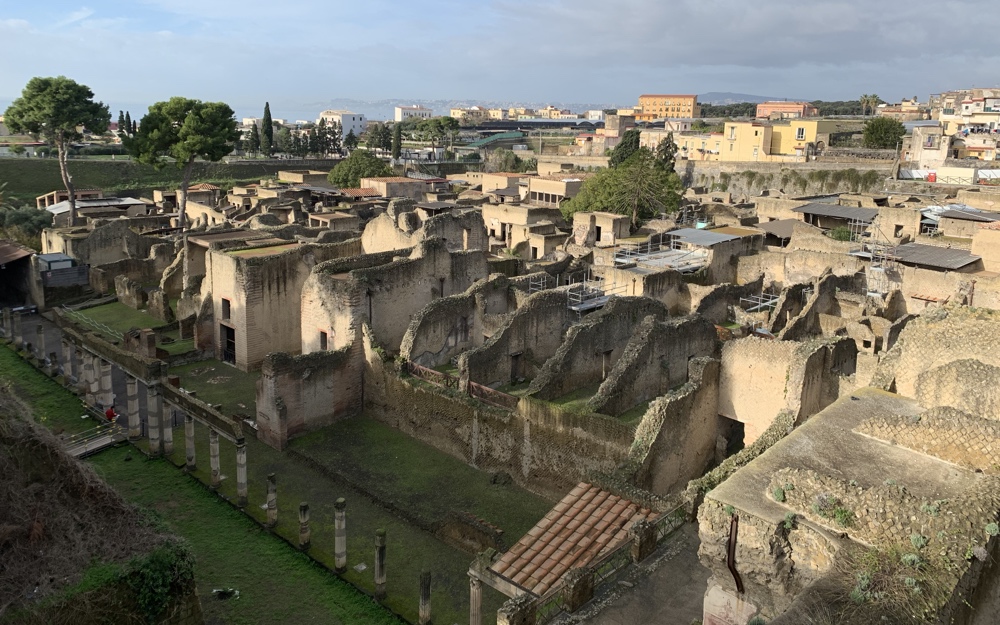
As we walked to the entrance we could see down onto the remains of part of the town.
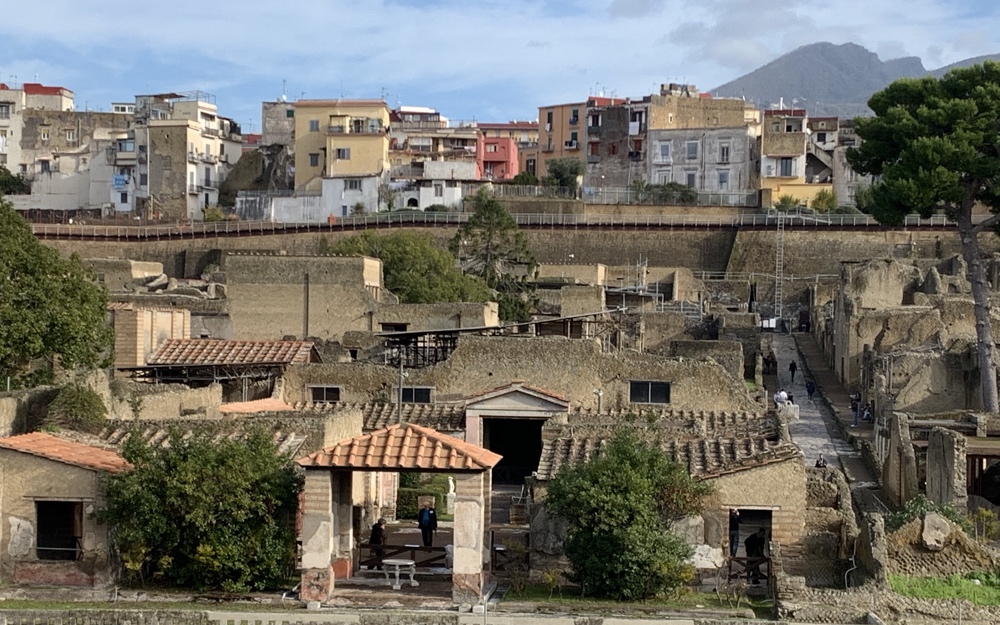
Herculaneum in the foreground with the current town of Ercolano above it and Vesuvius in the background.
Before going into Herculaneum we had a look around the museums. A Roman boat which was discovered on the ancient shoreline is on display, it was 9m long and had 3 pairs of row-locks.Many other artefacts are house in the main museum. Most have been cleaned but a few have been left in the state in which they were found.
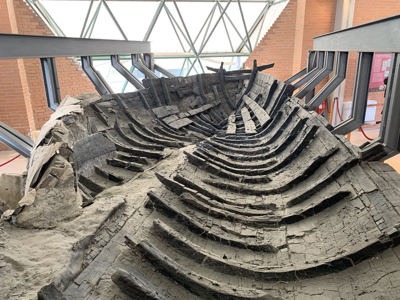
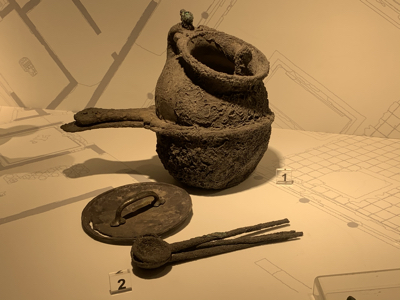
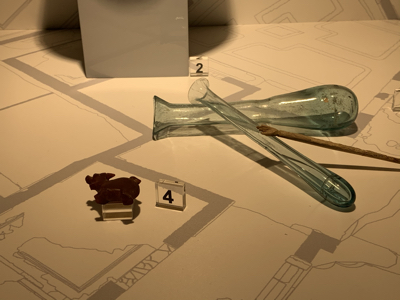
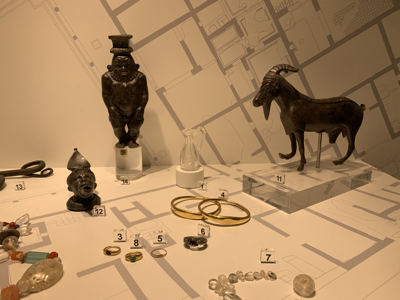
When the eruption started some of the residents hid in the boat houses. 140 skeletons were discovered during excavations in the 1980s. Fiberglass reproductions of the skeletons can be seen in the boat houses.
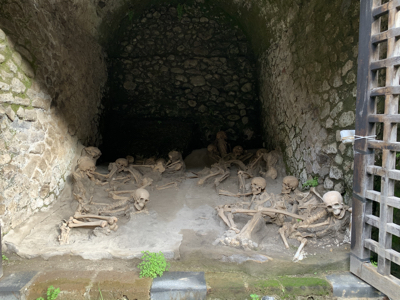
Fiberglass reproductions of the skeletons can be seen in the boat houses.
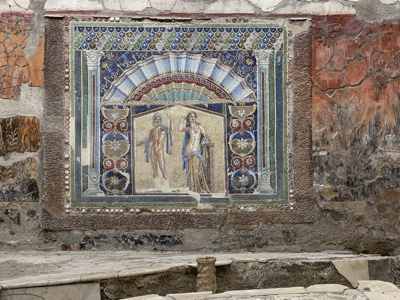
There were some beautifully preserved mosaics in several houses.
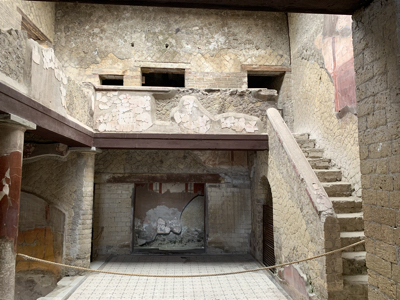
A stairway and upper rooms still in tact.
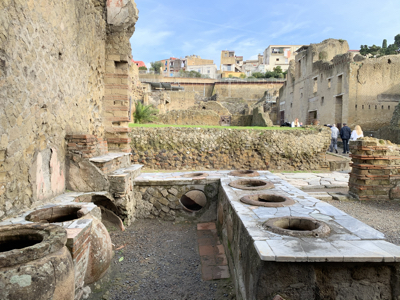
This would have been a corner shop.
Pompeii
We spent a couple of nights at a camper stop in Pompeii, which was within walking distance of the Roman city remains which are huge. We spent 6 hours wandering around and I took loads of photos.
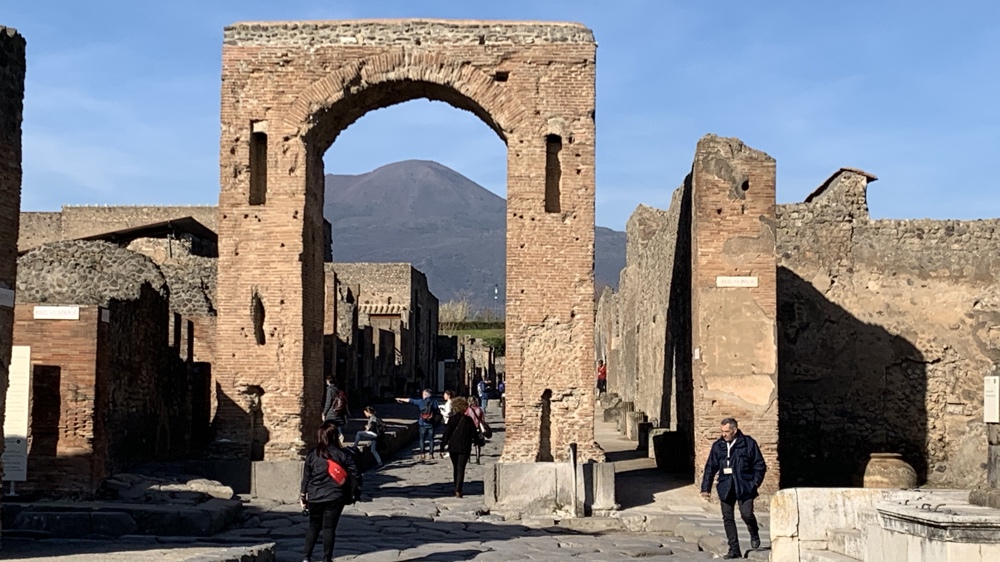
One of the streets with Vesuvius in the background.

The amphitheatre.
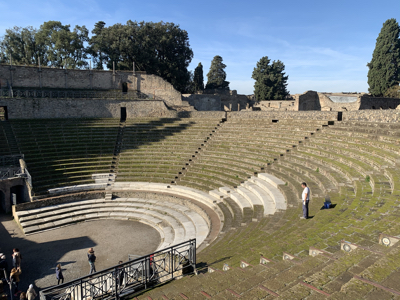
The large theatre.
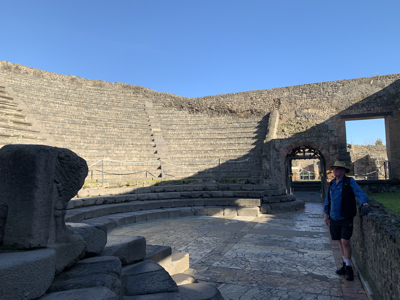
The small theatre.
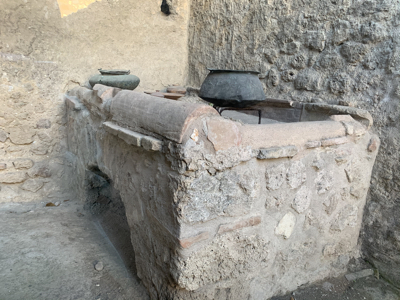
Part of a kitchen.
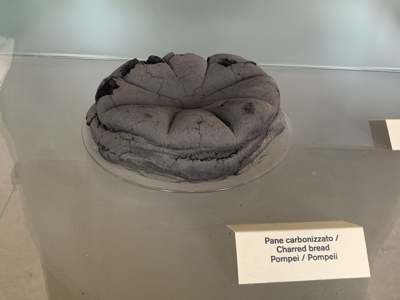
The remains of some charred bread.
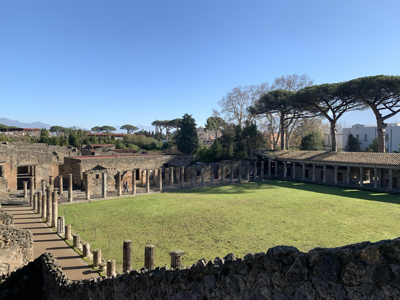
Gladiator barracks.
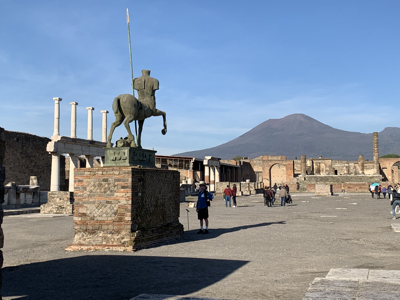
The Forum.
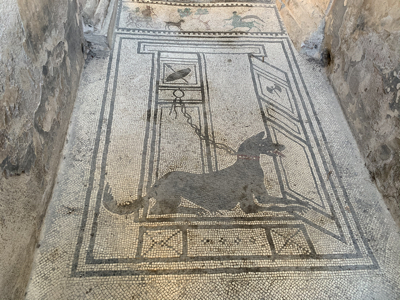
We saw lots of beautiful mosaic floors.
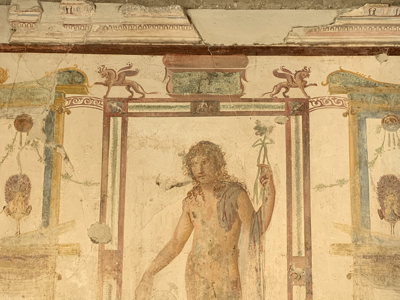
Several houses still had painting on the walls.
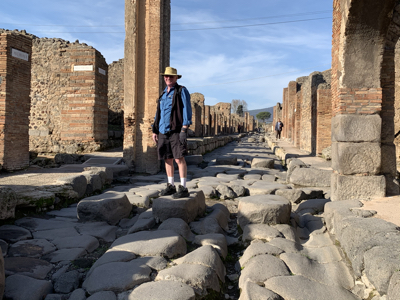
Raised stepping stones to get from one side of the street to the other.
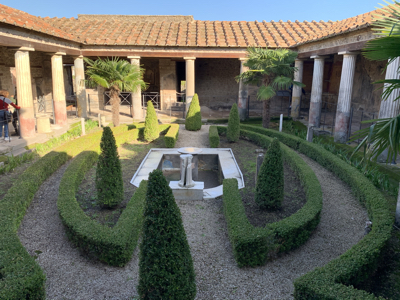
A few houses have been restored.
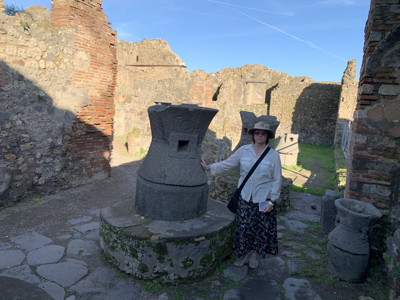
A large grindstone.
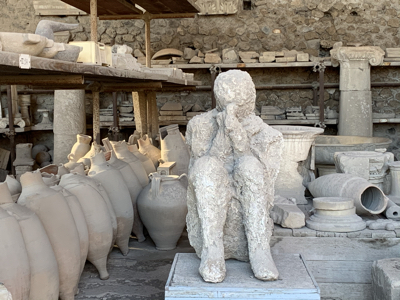
A cast of a body found in the ruins and lots of pots of various sizes.